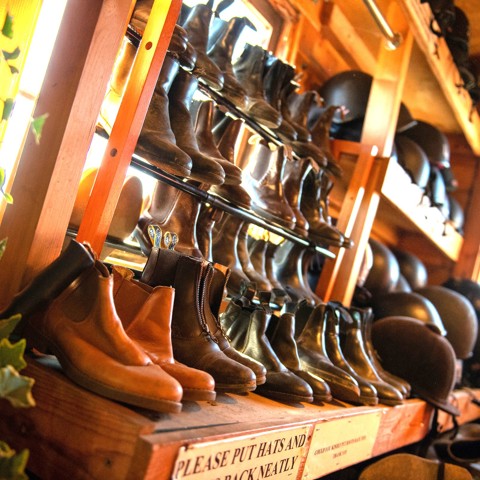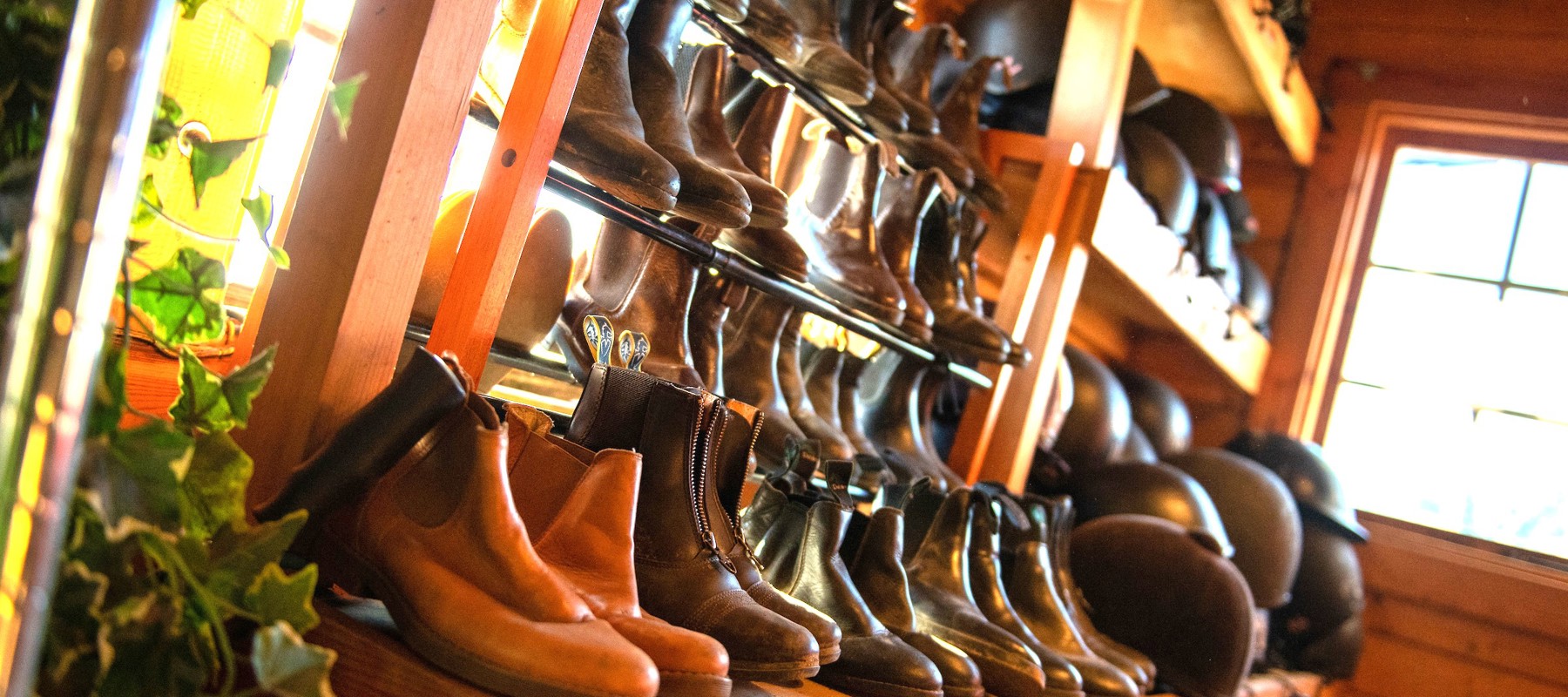We hope you find our guidance reassuring in preparation for your assessment, however, if you have any queries and would like to speak to someone, please call our Education Team on 02476 840508.
General Guidance
We want you to feel comfortable and relaxed during your assessment. We recommend clothing that is primarily safe and practical, and suitable for the weather conditions on the day. It is always a good idea to come in neat and tidy clothing to make a good impression, just as you would in any professional equestrian workplace. Wearing a show jacket or hacking jacket is not necessary for assessments.
We ask that clothing is not loose, flapping or noisy, as this could frighten horses that may not be used to such clothing.
We also recommend you bring a change of clothes, especially if wet or uncertain weather is expected. You should also bring refreshments and food, particularly if your assessment is for the full day. It’s important to look after yourself by staying hydrated and energised. You may be outdoors for some of your assessment, so sun protection is also recommended.
We cannot guarantee that all assessment centres will have facilities for a lockable place to store your bag/s and valuables during the assessment. Please be mindful of this.
Guidance on religious or cultural clothing
The BHS is committed to diversity, equity and inclusion. Candidates from every religious and social group are welcome. Assessments will take place in a safe and supportive environment without fear of prejudice so you can perform at your best. We encourage you to speak to your trainer (if you haven’t already) to discuss appropriate clothing for working safely around horses. We want to work with you so we can understand your requirements and support you at your assessment. Any exemptions to the guidance may be agreed but should not compromise your own or horse safety and welfare.
It may not be safe or appropriate to wear loose clothing when working around horses or riding, jodphurs or breeches underneath a long shirt or tunic that covers thighs could be considered.
Headscarf or headwear
chevron-down
chevron-up
As part of religious or cultural observance, some candidates may wish to wear a headscarf such as a hijab. For safety reasons, we would encourage sport scarves instead of one that wraps around the neck, and using pins in a scarf should be avoided. Scarves should be made from a thinner material that can be tucked in close to the head, without any loose sections, and tucked into the top or jumper. The riding hat must still fit correctly.
We are aware that for cultural or religious reasons some Sikh candidates may wish to wear a turban. We do advise that the option to wear a riding hat is considered due to the associated risks when horse riding or working with horses. However, we are happy to discuss the exemption of a riding hat for turban-wearing Sikhs if a declaration of ‘Acceptance of Risk and Indemnity’ is signed.
Religious jewellery
chevron-down
chevron-up
As part of religious or cultural observance, some candidates may choose to wear a bracelet or bangle, such as the Kara. It is permitted to wear jewellery during an assessment, if this is pushed up the forearm and secured in place with tape, or it can be covered with a tight or cuffed long sleeve top.
These are just a few examples, and we are happy to discuss other requirements, such as privacy for getting dressed or changing helmets/scarves.
All assessments
The guidance below will suit all assessments, but please note some additional requirements at riding assessments, depending on the Stage you will be taking.
Care and Lunge assessments
chevron-down
chevron-up
- Riding hat: You will be required to wear your riding hat when handling and working with horses. Hats must be correctly fitted and meet the current safety standards.
- Clothing: We do not require you to wear jodphurs, breeches or riding boots for non-ridden activities. Plain, dark colours are usually more practical for assessment days. Clothing and footwear should be practical and suitable for the activities you will be carrying out. Hoodies and trainers are not acceptable for safety reasons. We advise arms are covered with long sleeves for safety, t-shirts or polo shirts are acceptable if your shoulders are covered.
Gloves are required for any leading or lungeing activity.
- Jewellery: Within a practical environment jewellery can often cause injury or safety concerns, so for this reason it is advised that no jewellery, apart from a watch, is worn or is covered up during your assessment.
- Hair: It is advised for safety reasons that hair of shoulder length or longer is tied back. A hairnet may be worn.
Coaching assessments
chevron-down
chevron-up
- Riding hat: You will be required to wear your riding hat when coaching. Hats must be correctly fitted and meet the current safety standards.
- Clothing: We do not require you to wear jodphurs, breeches or riding boots for non-ridden activities. Plain, dark colours are usually more practical for assessment days. Clothing and footwear should be practical and suitable for the activities you will be carrying out. Hoodies and trainers are not acceptable for safety reasons. We advise arms are covered with long sleeves for safety, t-shirts or polo shirts are acceptable if your shoulders are covered.
Gloves are required for any leading or lungeing activity.
- Jewellery: Within a practical environment jewellery can often cause injury or safety concerns, so for this reason it is advised that no jewellery, apart from a watch, is worn or is covered up during your assessment.
- Hair: It is advised for safety reasons that hair of shoulder length or longer is tied back. A hairnet may be worn.
Riding assessments
chevron-down
chevron-up
For our riding assessments, general guidance is below, continuing with additional information or equipment required depending on the type of assessment you are taking.
- Riding hat: You will be required to wear your riding hat when handling and riding horses. Hats must be correctly fitted and meet the current safety standards.
- Jodphurs or breeches: All riding assessments will require you to wear suitable trousers such as jodhpurs or breeches. Plain colours are usually more practical for assessment days. Dark colours are acceptable.
- Riding boots: Long riding boots or short riding boots with or without half chaps or gaiters are suitable for the riding sections of the assessment.
- Jacket: A jacket such as a competition, show or hacking jacket is not required for any BHS assessment.
- Body protector: A body protector is strongly recommended by the BHS in all aspects of ridden activity, but it is compulsory for any assessments that include cross-country jumping and could be required during a show jumping element of an assessment depending upon the centre’s insurance policy. Your body protector must comply with current safety standards.
- Air jacket: Air jackets should not be worn within groups of riders in an assessment situation. This is due to the increased risk of reaction of horses with other candidates. If you wish to wear an air jacket, please contact the assessment centre for their consent.
- Other riding clothing: Plain, dark colours are more practical for an assessment. We advise arms are covered with long sleeves for safety, t-shirts or polo shirts are acceptable if your shoulders are covered. Hoodies are not acceptable for safety reasons.
Gloves are required for any riding activity.
- Jewellery: Within a practical environment jewellery can often cause injury or safety concerns, so for this reason it is advised that no jewellery, apart from a watch, is worn or is covered up during your assessment.
- Hair: It is advised for safety reasons that hair of shoulder length or longer is tied back. A hairnet may be worn.
Stage 1 Ride
chevron-down
chevron-up
In addition to the riding assessments general guidance, you will also need to bring a short whip between 14 and 30 inches (35 to 76 centimetres). If you don’t have one, you may be able to borrow one from the assessment centre. Contact them before your assessment to arrange this.
Stage 2 Ride
chevron-down
chevron-up
In addition to the riding assessments general guidance, you will be required to carry a whip for flat work and jumping. For flatwork, the whip must not be longer than 39 inches (99 centimetres). For showjumping, one whip is permitted and must be between 17 to 30 inches (45 to 75 centimetres) and must not be weighted or with a hard point at the end. The end of the whip must be padded. The ‘pad’ must be smooth with no protrusion or raised surface (which included embroidery) and be made of a shock absorbing material throughout its circumference.
Stage 3, 4, BHSI or Fellowship riding
chevron-down
chevron-up
In addition to the riding assessments general guidance, the following guidance applies.
- Hat: Hats with fixed peaks are not permitted for the cross-country riding, in line with British Eventing standards.
- Body protector: Is compulsory for the cross-country sections of these assessments; we also strongly recommend that a body protector is worn during the jumping element of these assessments too. Please remember to check with the centre where your assessment is taking place, as their insurance policy may mean wearing a body protector when show jumping is compulsory. Your body protector must meet current safety standards.
- Whip: For flatwork riding you can ride with a schooling whip up to 39 inches (99 centimetres). One whip is permitted for show jumping and cross country and must be between 17 to 30 inches (45 to 75 centimetres) and must not be weighted or with a hard point at the end. The end of the whip must be padded. The ‘pad’ must be smooth with no protrusion or raised surface (which included embroidery) and be made of a shock absorbing material throughout its circumference.
- Spurs: At Stage 4 and above, spurs may be worn for all disciplines. They must be short and blunt with the shank set centrally to the rear. They must only be used as necessary, and you will be asked to remove them if the assessor or centre representative feels they are unnecessary.
Guidance on additional aids when riding
If you have an injury, disability or long-term health condition and usually ride with additional aids then you can request the use of these, and any other adapted tack and equipment via our Access Arrangements process. Please refer to our policy and guidelines for further information.
Disease Prevention
To minimise the risk of transmitting infectious diseases, we request that all candidates change into clean clothing and, wherever possible, disinfect footwear before attending a BHS assessment, particularly if you have been in contact with horses from outside the assessment centre.
If a yard you have been in contact with experiences an outbreak of an infectious disease prior to your BHS assessment, please contact the BHS Education Team on 02476 840508 for advice before attending your BHS assessment.
We are very grateful for your co-operation with this protocol and your help to tackle our shared concern around the potential spread of infectious diseases within the equine population.


